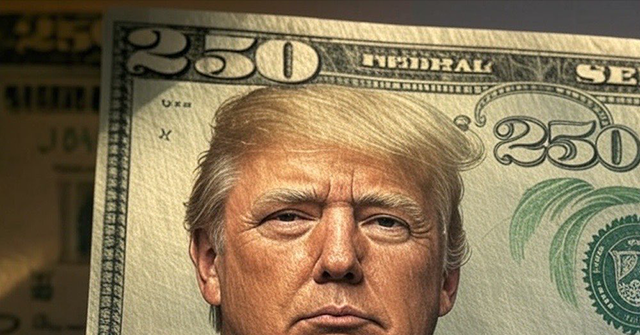A Proposal for a $250 Bill Featuring Donald Trump Sparks Debate
In a recent social media post, Representative Joe Wilson (R-SC) proposed an unusual idea: placing former President Donald Trump on a newly created $250 bill. The congressman suggested that this would be the “most valuable bill for the most valuable President,” implying that Trump’s contributions to the nation warrant such an honor. Wilson announced that he is drafting legislation to direct the Bureau of Engraving and Printing to design this new denomination, which he believes is necessary due to the current economic challenges he attributes to President Joe Biden. Specifically, Wilson cited “Bidenflation” as a reason why American families are forced to carry more cash, arguing that a $250 bill would be a practical solution. However, his proposal has sparked a wave of debate, with many questioning the legality, practicality, and appropriateness of such a move.
Tradition and Law Prohibit Living Persons on U.S. Currency
One of the immediate concerns raised by Wilson’s proposal is the long-standing tradition—and subsequent law—that prohibits living individuals from appearing on U.S. currency. This practice, often reflected in the nickname “dead presidents” for U.S. bills, was formalized by an 1866 Act of Congress. The idea behind this tradition is to avoid the appearance of a monarchy, where rulers are celebrated for their lifetime reign. Instead, the U.S. has historically honored deceased individuals who have made significant contributions to the nation. According to the Federal Reserve Bank of San Francisco’s website, “a living person may not appear on” United States currency, making Wilson’s proposal a direct challenge to this established rule. This has led many to question whether the congressman’s idea is even feasible under current laws.
Public Reaction: Skepticism and Confusion
Wilson’s announcement was met with a mix of confusion and skepticism on social media. Many users questioned whether the post was satirical, given the unconventional nature of the proposal. “Had to double check. This isn’t a parody account,” one user wrote, echoing the sentiment of others who were unsure if the congressman was serious. Another user asked, “Satire??” while others expressed frustration that lawmakers would prioritize such an issue over more pressing problems. “Really? I voted for Trump, but isn’t there more pressing issues at hand?” one individual questioned. Additionally, some users pointed out the practical challenges of introducing a $250 bill, especially since the U.S. has not issued denominations above $100 since 1969. “Who carries cash?” another user asked, highlighting the decline in the use of physical money in favor of digital payment methods.
The Discontinuation of High-Denomination Bills
The Bureau of Engraving and Printing’s website provides some historical context that further complicates Wilson’s proposal. On July 14, 1969, the Department of the Treasury and the Federal Reserve System announced that currency notes in denominations of $500, $1,000, $5,000, and $10,000 would be discontinued due to lack of use. These higher denominations were last printed in 1945, although they remained in circulation until 1969. Today, the U.S. government does not issue or circulate any bills above $100, making the idea of a $250 bill seem out of step with current monetary policy. While Wilson’s proposal may be symbolic, it runs counter to decades of numerical standardization in U.S. currency.
Is This Proposal Serious or Satirical?
The ambiguity of Wilson’s proposal has left many wondering whether it is a genuine legislative effort or simply a rhetorical gesture. Given the legal and historical barriers to placing a living person on currency, as well as the discontinuation of high-denomination bills, the practical implementation of this idea seems highly unlikely. Some have interpreted the proposal as a political stunt aimed at gaining attention and rallying support among Trump’s base. Others have criticized it as a distraction from more urgent issues, such as economic recovery, healthcare, and climate change. Regardless of Wilson’s intentions, the proposal has succeeded in generating widespread discussion, albeit not necessarily the kind that reflects well on the congressman or his priorities.
Conclusion: A Divisive and Unlikely Proposal
In summary, Representative Joe Wilson’s suggestion to create a $250 bill featuring Donald Trump has sparked a heated debate that touches on issues of tradition, legality, practicality, and political priorities. While the proposal may resonate with some of Trump’s supporters, it faces significant hurdles, including a federal law that prohibits living individuals from appearing on U.S. currency. Additionally, the discontinuation of high-denomination bills since 1969 raises questions about the practicality of introducing a $250 note. The public’s reaction has been largely skeptical, with many questioning the appropriateness of such a proposal at a time when the nation faces more pressing challenges. Ultimately, whether this idea is serious or satirical, it highlights the deep divisions in American politics and the challenges of governance in a highly polarized environment.


